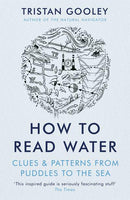Pilot Charts for the Great Oceans of the World

 Navigators rely on their pilot charts to plan the safest and fastest route after careful consideration of the weather and ocean conditions. Long distance cruisers, boats and ships rely on their pilot charts above all else.
Pilot charts depict the prevailing weather patterns including wind directions and speeds, wave heights, ocean currents, visibility, barometric pressures, sea surface temperatures, and ice limits for each month of the year.
Navigators rely on their pilot charts to plan the safest and fastest route after careful consideration of the weather and ocean conditions. Long distance cruisers, boats and ships rely on their pilot charts above all else.
Pilot charts depict the prevailing weather patterns including wind directions and speeds, wave heights, ocean currents, visibility, barometric pressures, sea surface temperatures, and ice limits for each month of the year.
History of Pilot Charts
 Pilot charts are used as passage planning tools. Much of the information contained on pilot charts stems from the shipmasters’ log-books kept by the 19th century Lieutenant Matthew Fontaine Maury of the US Navy. He earned the title of the ‘Pathfinder of the Seas’ for his study of ship routes and logbooks. In 1848 Maury published wind fields of the Earth and he inspired the first international marine conference in 1853.
Using the information from the conference, Maury produced charts for the Atlantic, Pacific and Indian Oceans. In 1885 Maury realised the danger of collision in the North Atlantic due to the fog, icebergs and increasing traffic, so he recommended separate shipping lanes for eastbound and westbound steamers.
Pilot charts are used as passage planning tools. Much of the information contained on pilot charts stems from the shipmasters’ log-books kept by the 19th century Lieutenant Matthew Fontaine Maury of the US Navy. He earned the title of the ‘Pathfinder of the Seas’ for his study of ship routes and logbooks. In 1848 Maury published wind fields of the Earth and he inspired the first international marine conference in 1853.
Using the information from the conference, Maury produced charts for the Atlantic, Pacific and Indian Oceans. In 1885 Maury realised the danger of collision in the North Atlantic due to the fog, icebergs and increasing traffic, so he recommended separate shipping lanes for eastbound and westbound steamers.
Complete Atlas
 Information is presented graphically for each 5° section of the chart. Hundreds of years of meteorological and oceanographic observations have been averaged and included for each month of the year. Plan your voyage by selecting the route with the most favourable ocean and weather conditions.
Indian Ocean Pilot Chart Complete Atlas
South Atlantic Ocean Pilot Chart Complete Atlas
North Atlantic Ocean Pilot Chart Complete Atlas
North Pacific Ocean Pilot Chart Complete Atlas
South Pacific Ocean Pilot Chart Complete Atlas
Of course, if you know which month you will be travelling and you don’t need the complete atlas containing all 12 monthly charts covering the year, choose one or two charts for the months you need.
Information is presented graphically for each 5° section of the chart. Hundreds of years of meteorological and oceanographic observations have been averaged and included for each month of the year. Plan your voyage by selecting the route with the most favourable ocean and weather conditions.
Indian Ocean Pilot Chart Complete Atlas
South Atlantic Ocean Pilot Chart Complete Atlas
North Atlantic Ocean Pilot Chart Complete Atlas
North Pacific Ocean Pilot Chart Complete Atlas
South Pacific Ocean Pilot Chart Complete Atlas
Of course, if you know which month you will be travelling and you don’t need the complete atlas containing all 12 monthly charts covering the year, choose one or two charts for the months you need.
Cornell’s Ocean Atlas Pilot Charts for all Oceans of the World
 Due to climate change information and incorrect observations, some believe pilot charts based on Maury’s historical logbooks may not be as accurate as they could be. If you would prefer to have pilot charts that aren’t based on recent, modern-day data rather than historic data, Cornell’s charts may be for you.
Father and son team Jimmy and Ivan Cornell used extensive meteorological satellite information from 1987 to now to produce 129 pilot charts. Real-time geospatial and remote buoy sensing data was gathered from a network of OSCAR and other meteorological satellites, using Earth and Space Research data programs.
The Atlas includes a comprehensive description of weather conditions in every ocean and tactical suggestions for the most popular times of the year for passages to be undertaken.
Sailors are describing the charts as ground-breaking for their content and layout. The scale also allows sailors to plan their voyage on a single chart.
“The main objective of Cornell’s Ocean Atlas is to make it possible to take advantage of prevailing winds and seek out whenever possible favourable conditions. Essentially, to try to always be in the right place at the right time, or, better still: Not to be in the wrong place at the wrong time!”
Jimmy Cornell
Due to climate change information and incorrect observations, some believe pilot charts based on Maury’s historical logbooks may not be as accurate as they could be. If you would prefer to have pilot charts that aren’t based on recent, modern-day data rather than historic data, Cornell’s charts may be for you.
Father and son team Jimmy and Ivan Cornell used extensive meteorological satellite information from 1987 to now to produce 129 pilot charts. Real-time geospatial and remote buoy sensing data was gathered from a network of OSCAR and other meteorological satellites, using Earth and Space Research data programs.
The Atlas includes a comprehensive description of weather conditions in every ocean and tactical suggestions for the most popular times of the year for passages to be undertaken.
Sailors are describing the charts as ground-breaking for their content and layout. The scale also allows sailors to plan their voyage on a single chart.
“The main objective of Cornell’s Ocean Atlas is to make it possible to take advantage of prevailing winds and seek out whenever possible favourable conditions. Essentially, to try to always be in the right place at the right time, or, better still: Not to be in the wrong place at the wrong time!”
Jimmy CornellFeatured collection
Categories:
boating
reviews
Posted on: Jul 25, 2017








Comments